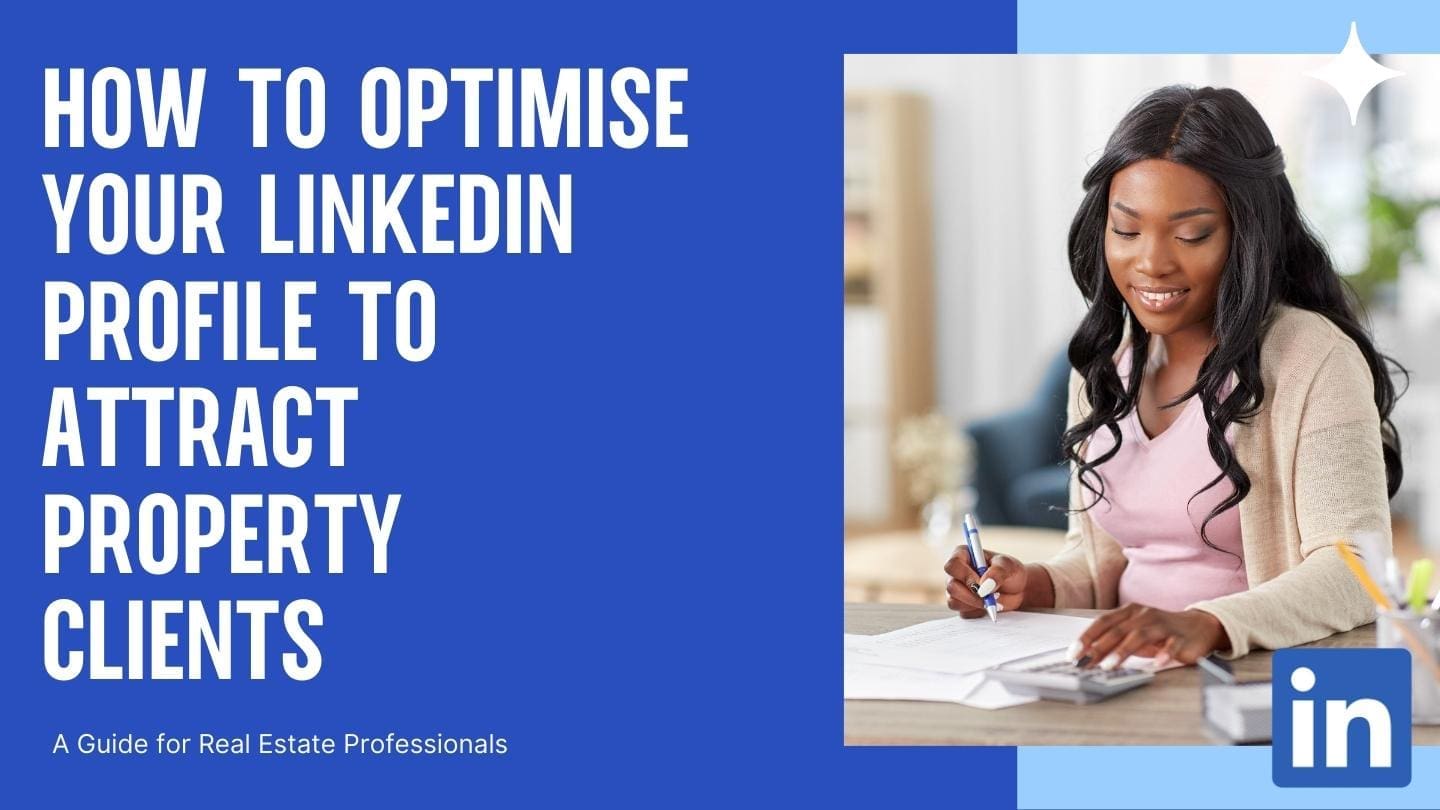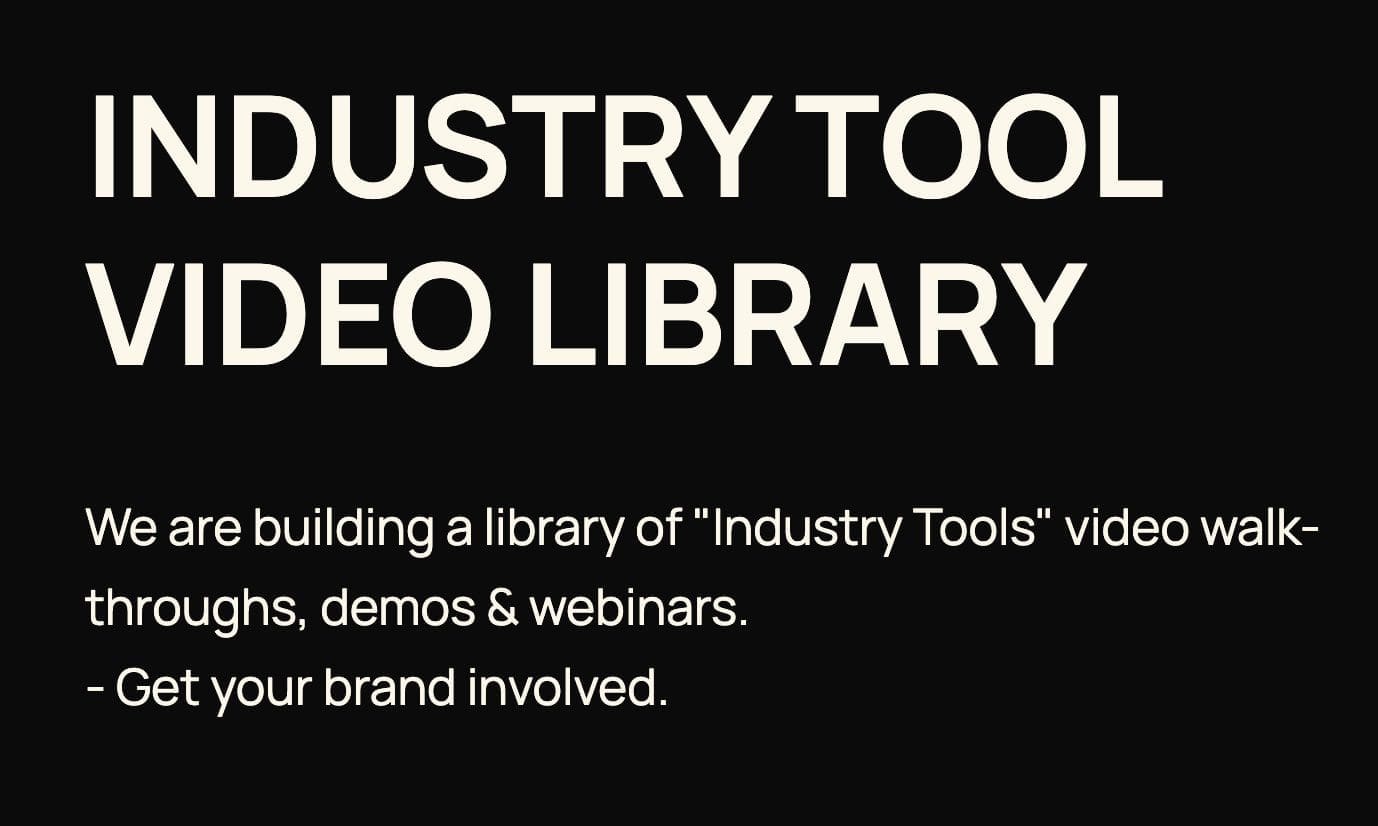AI Learning Centres:
- AI – Learn The Basics
- Get The Most From ChatGPT
- Branding in The Age of AI
- AI for Client Experience
- AI For Prospecting
- AI For Marketing
- AI For Listings & Ads
- Team Adoption of AI
- AI For PM
- AIO & Generative Search
- AI For Operations & Efficiency
- AI For Market Research & Analysis
- AI Ethics, Privacy & Compliance in Real Estate
Digital Marketing & Social Media Learning Centres:
Guides & Downloads

How to Optimise Your LinkedIn Profile to Attract Property Clients
Why LinkedIn Matters for Real Estate Professionals
In real estate, first impressions matter. Whether you are speaking with a homeowner, a first-time buyer, or a seasoned investor, people decide quickly whether they trust you. Traditionally, this decision happened when clients walked into your office or met you at an open home. Today, many of these first impressions are happening online.
LinkedIn is more than just a professional networking site. It has become a place where people research professionals before deciding whether to work with them. For real estate agents, this means your LinkedIn profile is not just a resume. It is a digital storefront that shows your credibility, expertise, and personality.
An optimised LinkedIn profile can:
Help sellers feel confident in your ability to market their property
Position you as a trusted local expert in your suburb or city
Attract referral opportunities from professionals in related industries (lawyers, mortgage brokers, accountants)
Build a long-term reputation that follows you across your career
A poorly set-up profile, on the other hand, can make you look inexperienced or disengaged. Optimising your LinkedIn profile is one of the simplest and most effective ways to strengthen your digital presence.
Step 1: Start with a Professional Profile Photo
Your profile photo is the first thing people see. Studies show that LinkedIn profiles with a photo receive far more views and connection requests than those without. For real estate professionals, it is especially important because clients want to work with someone approachable and trustworthy.
Tips for your photo:
Use a professional headshot if possible
Dress the way you would when meeting a client in person
Choose a neutral background or use a blurred local landmark
Smile in a way that looks genuine rather than forced
Think of your profile photo as your digital handshake. It sets the tone for every other impression.
Step 2: Maximise the Banner Space
The banner (the wide image behind your profile photo) is often overlooked, yet it is valuable visual real estate. This space can reinforce your brand, highlight your local area, or showcase your unique style.
Ideas for your banner:
A professional design with your agency’s colours and contact details
A local landmark or skyline that immediately signals your area of expertise
A tagline or statement such as “Helping Families Buy and Sell in [Suburb]”
This is not the place for generic images. Use the banner strategically to tell clients who you are and where you work.
Step 3: Write a Headline That Sells Your Value
Your headline appears under your name and follows you across LinkedIn. Most agents simply list “Real Estate Agent” or “Sales Consultant”. While accurate, it does little to show your unique strengths.
Instead, write a headline that communicates both what you do and who you help.
Examples:
“Residential Property Specialist Helping Homeowners in [Suburb] Achieve Record Results”
“Trusted Real Estate Advisor | Residential Sales and Auctions in [City]”
“Helping Families Move With Confidence in [Region]”
By focusing on benefits rather than just your job title, you instantly become more attractive to potential clients.
Step 4: Create a Compelling About Section
The About section is where you can truly tell your story. Think of it as a short introduction you would give if you met someone at an open home. It should feel warm, authentic, and easy to read.
Structure your About section:
Start with your passion – why you love real estate and helping people.
Share your expertise – highlight your focus areas (e.g. family homes, luxury properties, investments).
Demonstrate credibility – years of experience, awards, or sales results.
Explain how you help – focus on client benefits like smooth transactions, strong negotiation, or innovative marketing.
Add a call to action – invite people to connect or message you if they are buying or selling.
Example opening line:
“I believe that buying or selling a home is one of life’s most important decisions. My role is to make that process as smooth and rewarding as possible for my clients.”
Step 5: Highlight Experience with Impact
The Experience section should not read like a job description. Instead, it should highlight achievements and outcomes.
For each role, consider:
Your position and agency
Key responsibilities, written in client-friendly language
Results achieved (e.g. “Achieved an average of 10% above suburb median sale price”)
Community involvement or leadership roles
Where possible, include measurable results. Numbers stand out more than general statements.
Step 6: Use the Featured Section to Showcase Content
The Featured section allows you to display your best work. This is an opportunity to show real value to potential clients.
You could feature:
A video introducing yourself and your services
A recent suburb market update or property report
An article you’ve written about the buying or selling process
Client testimonials in video or written form
By curating strong content here, you reinforce that you are active, knowledgeable, and trusted.
Step 7: Gather Recommendations and Endorsements
Social proof is essential in real estate. A homeowner is far more likely to choose an agent who has glowing feedback from past clients.
Tips:
Request recommendations from clients after a successful sale
Ask colleagues and business partners for endorsements of skills
Keep recommendations specific – avoid generic lines like “Great agent”
Aim to build 5–10 strong recommendations that highlight professionalism, results, and client care
This section builds trust faster than anything you can write about yourself.
Step 8: Use Keywords to Improve Visibility
LinkedIn functions like a search engine. People often search terms such as “Real Estate Agent in [Suburb]”. If your profile does not include these words, you may not appear.
Include keywords naturally in:
Your headline
About section
Experience descriptions
Skills section
Examples of keywords:
Real Estate Agent [Suburb]
Residential Sales Specialist
Auction Expert
Property Marketing Professional
Think about what a client would type into LinkedIn when searching for an agent.
Step 9: Stay Active and Post Regularly
A polished profile alone is not enough. Clients feel reassured when they see you are active. This shows that you are engaged in your profession and your community.
Post about:
Current listings with personal commentary
Market insights relevant to your area
Tips for buyers or sellers
Local community events or initiatives
Behind-the-scenes moments from open homes or auctions
Consistency is key. Aim for 2–3 posts per week.
Step 10: Engage with Others
LinkedIn is a networking platform, not just a broadcasting platform. Engage by:
Commenting thoughtfully on posts from local business owners, mortgage brokers, and lawyers
Congratulating people on achievements or milestones
Sharing posts that are relevant to your clients or community
This helps you stay visible and positions you as someone who values relationships.
Step 11: Make Contact Easy
It sounds simple, but many agents forget to add their contact information. Make sure your profile includes:
Mobile phone number
Email address
Website or property portal link
Call to action such as “Message me today if you are considering selling in [Suburb]”
The easier you make it for people to contact you, the more likely they will.
Advanced Tips for Agents
Create a Custom URL: Edit your profile link so it reads linkedin.com/in/yourname instead of random numbers. This looks professional and is easier to share.
Use Video: Short videos introducing yourself or sharing market updates can be uploaded directly to LinkedIn for higher engagement.
Leverage Articles: Publishing long-form articles builds authority. Consider writing posts like “5 Things Every Seller Should Know Before Listing in [Suburb]”.
Analytics: Use LinkedIn’s analytics to track profile views, post engagement, and connection growth. Adjust your strategy based on what works best.
Your LinkedIn profile is more than a digital CV. It is a personal marketing tool that works for you every day. By optimising it, you create a professional presence that builds trust, attracts clients, and positions you as the expert in your local market.
The time invested in updating your profile pays off with stronger credibility, more connections, and a steady flow of opportunities. In a world where clients search online before picking up the phone, LinkedIn is one of the most valuable platforms to master.
LinkedIn Optimisation Checklist for Real Estate Agents
Profile Basics
Upload a professional headshot with a friendly smile
Add a banner image that reflects your brand or local area
Create a custom LinkedIn URL for easy sharing
Headline and About
Write a client-focused headline that highlights your value
Craft an About section that shares your passion, expertise, and results
End with a clear call to action
Experience and Content
Highlight measurable results in your Experience section
Add videos, reports, or testimonials to the Featured section
Post consistently with listings, insights, and community updates
Trust and Visibility
Collect 5–10 strong client recommendations
Request skill endorsements for real estate, negotiation, and sales
Use keywords naturally to improve search visibility
Engagement and Contact
Comment on and share posts from local professionals
Congratulate and engage with community members
Add clear contact information and invite people to connect






